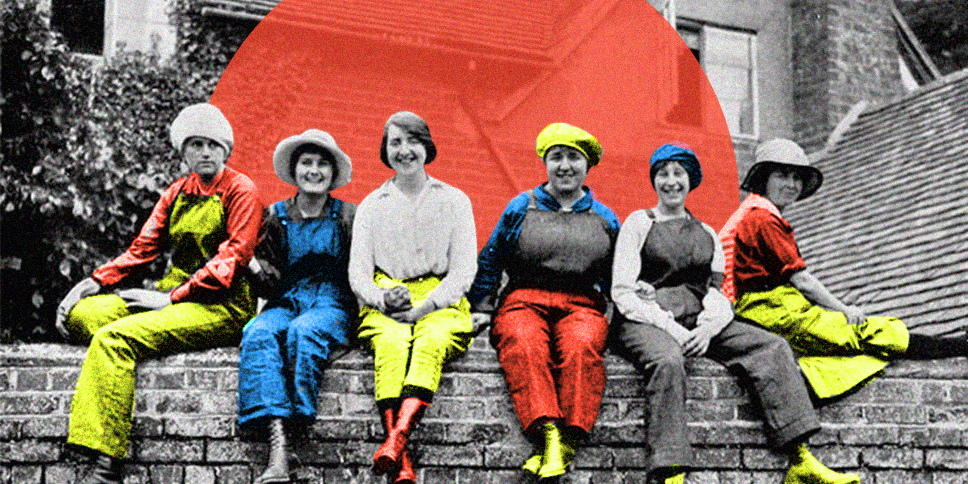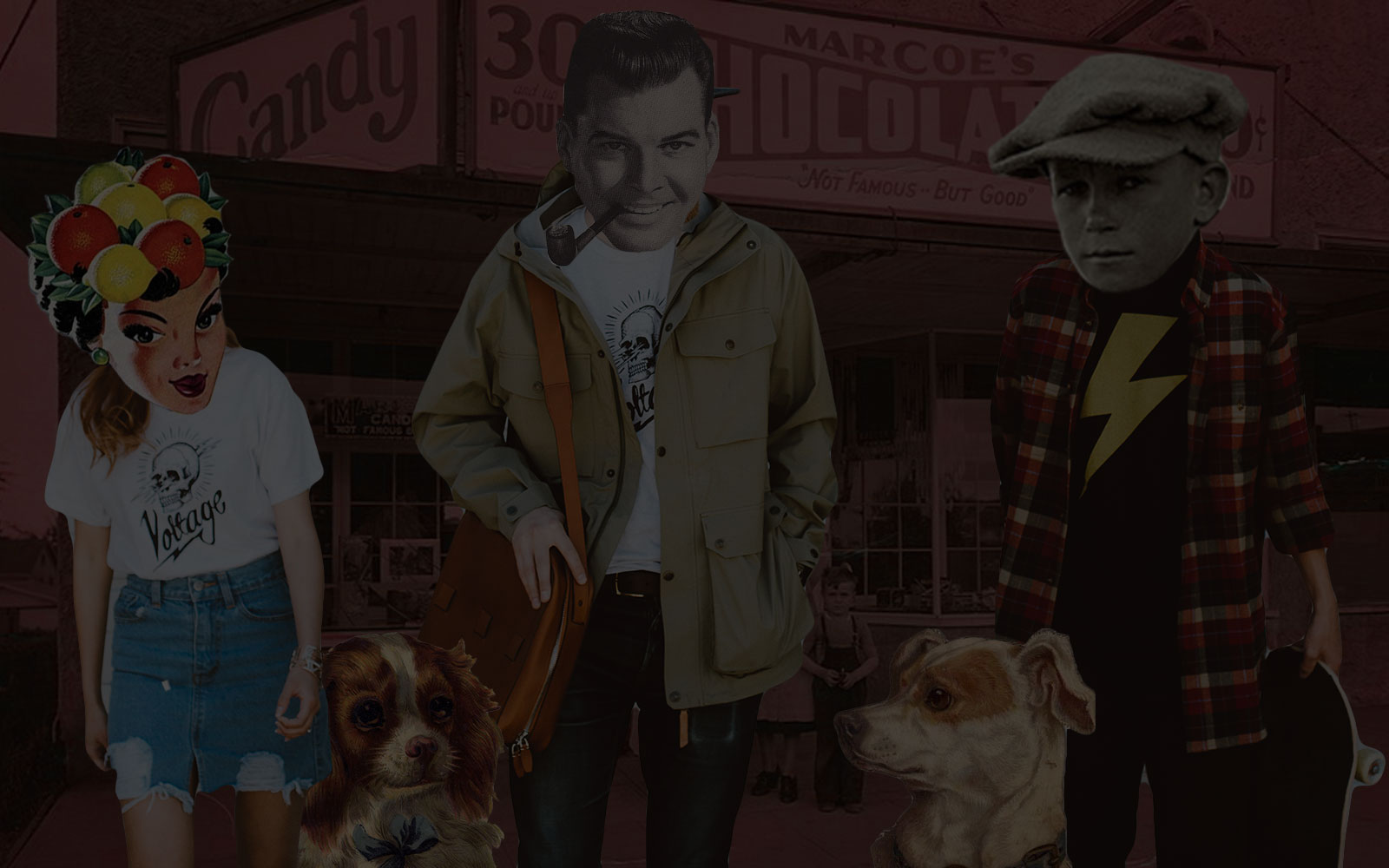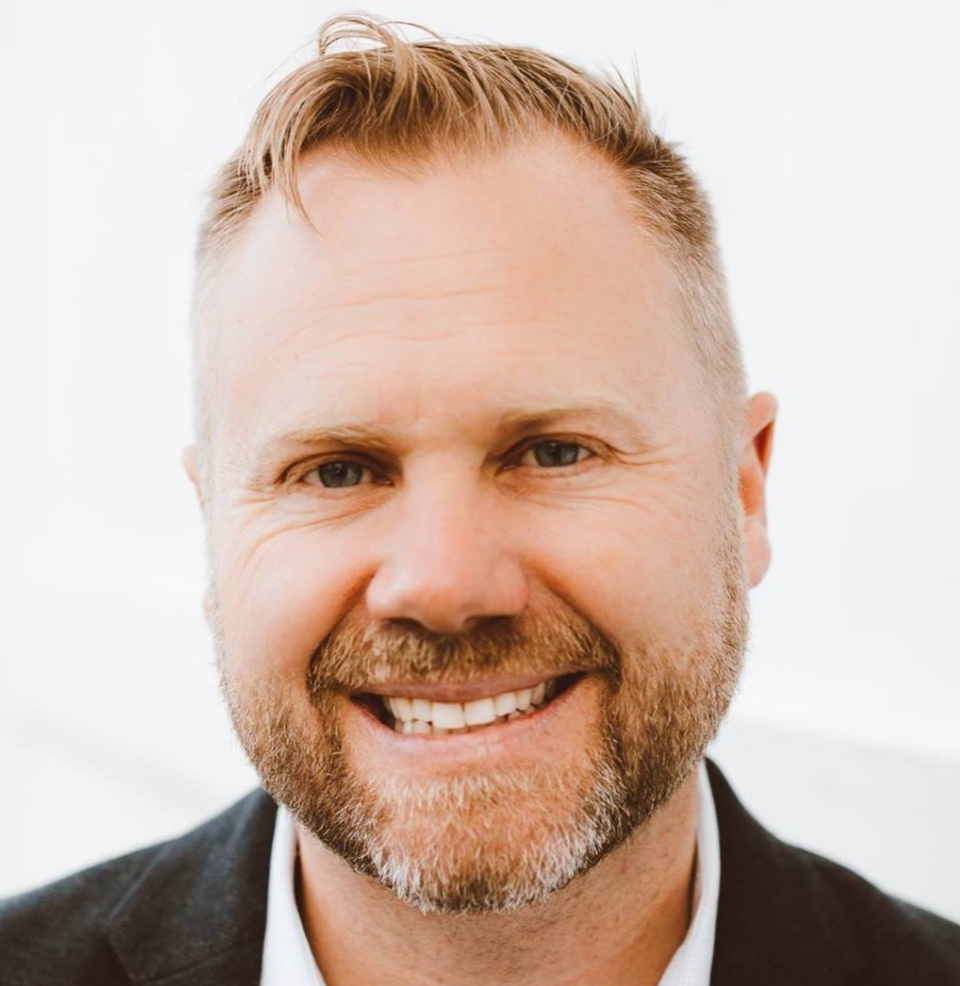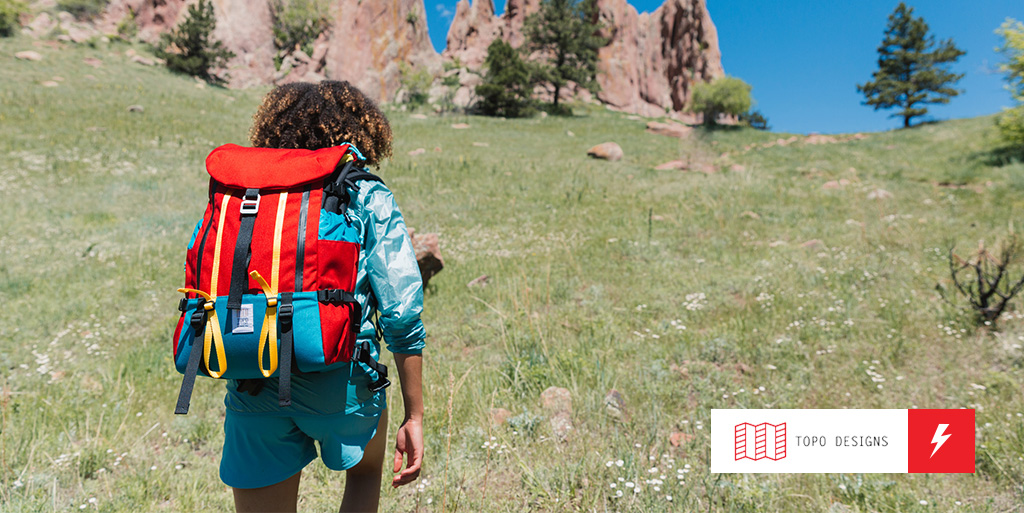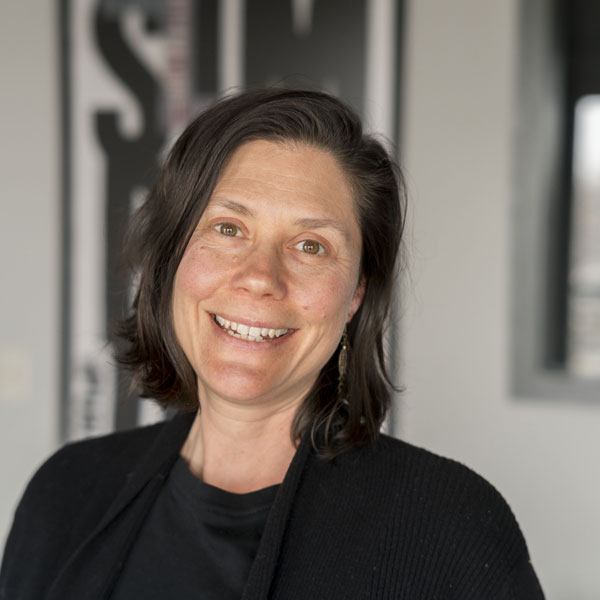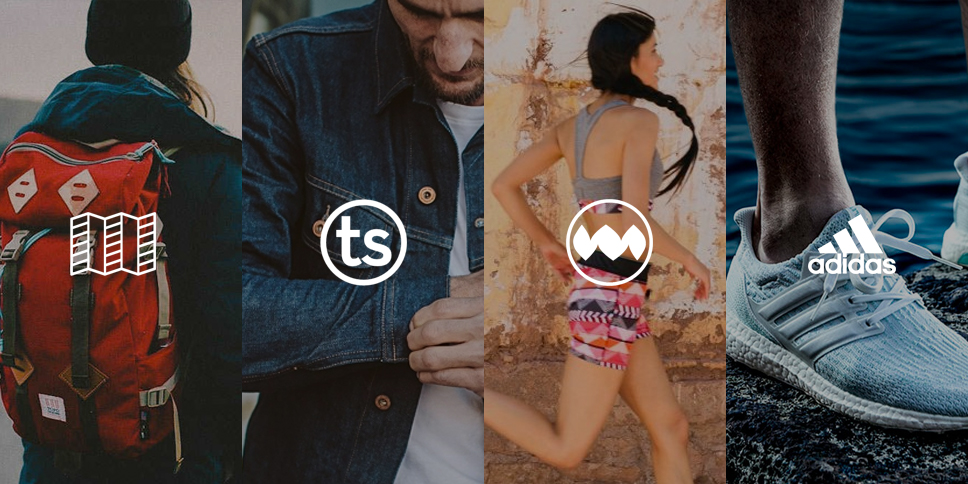Here in Colorado, we’re all about our gear. Especially gear that looks born of the wild – and performs in it, too. Denver-based Topo Designs is a major infiltrator on that scene with their outdoor bags, packs and apparel that put the convergence of form, fashion and function on display. In fact, if you walk around our office, you’re sure to see some of their fresh creations hanging around.
Eric, VOLTAGE CEO, hopped on the phone with Topo Designs co-founder Jedd Rose to get some of the brand’s backstory, the low-down on their approach to collaborations, take on sustainability and plans for the future.
Eric: Can you start us off with a brief history?
Jedd: I grew up in Laramie, Wyoming, an hour north of Fort Collins, and went to college for fine art. I actually did printmaking and sculpture in college. Right about graduation, it sort of dawned on me that I actually had to get a job doing something, so I took a couple of graphic design classes right before I graduated just to basically learn the software.
After working in print, video and interactive design for about 10 or 12 years, I had this little bit of an edge to do something else, and started real naively selling bags in my basement. I just went out and bought a sewing machine. For me, it was less about starting an outdoor empire and more about teaching myself how to do something new.
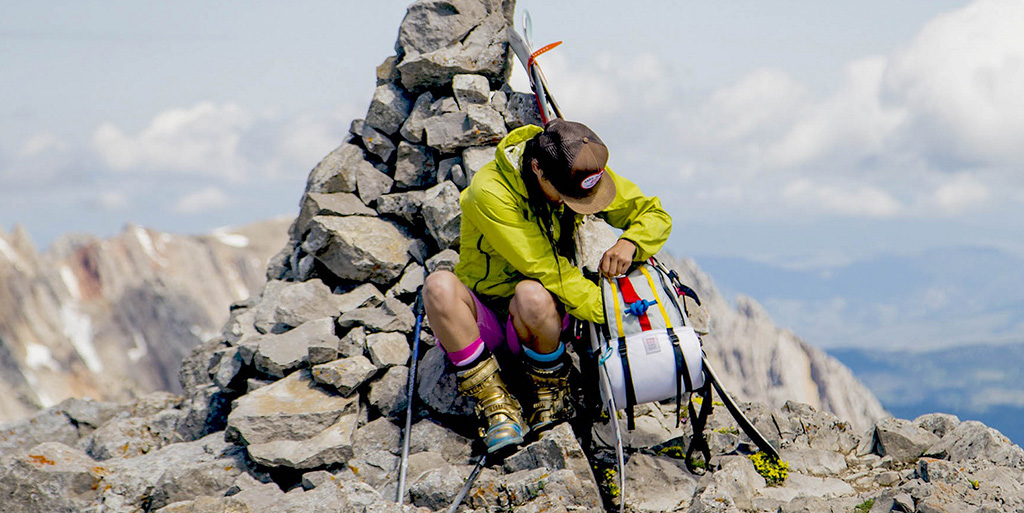
I spun my wheels for a while doing that fairly inefficiently. Then, finally, I actually came up with a couple of bag design designs that I kind of liked. I’ve got a business partner in Denver and we’ve been friends and worked together at another company in the past. He’d always done development slash product management, and I had always done the creative at our respective companies. We linked up after I had a few bag designs, and we found a sewing shop actually near you in Louisville. The guy who owned that shop had just quit working for Chrome. He was a sewer there and started up his own shop. He was willing to take on a small company like us and do really small rounds because he didn’t have many clients at the time. We just really lucked out. We hooked up with him and started off doing some small production runs and put up a really janky website.
Then we got an inquiry from Japan by these two guys who wanted bags for themselves. Turns out, after they got the bags, they emailed us back and said, “Hey these are pretty sweet. Are you guys interested in selling in Japan?” And we said that we hadn’t really thought about it, but that sounds pretty cool.We should do that. They were our first wholesale client.
Unlike, I would say, a lot of small businesses, we didn’t start with friends and family and work from that epicenter out. We started a long ways away and we’re working ourselves back to Colorado.
I’m just curious, Jedd, are some of those original designs you came up with still in your line now? I’m sure they’ve evolved a bit.
Yeah, our packs have evolved slightly since then, but nobody could really tell. It’s just stuff that was a little weird about the design that didn’t work very well and that we just kind of tweaked. We’ve been pretty regimented about keeping a few of those designs and not changing them just because. I think in our business that’s a pretty tough thing to do – to just keep it, not touch it and say that it’s good. Our Klettersack and our Daypack are two of those original designs that we’ve kept forever. They’re still some of our best-selling bags.
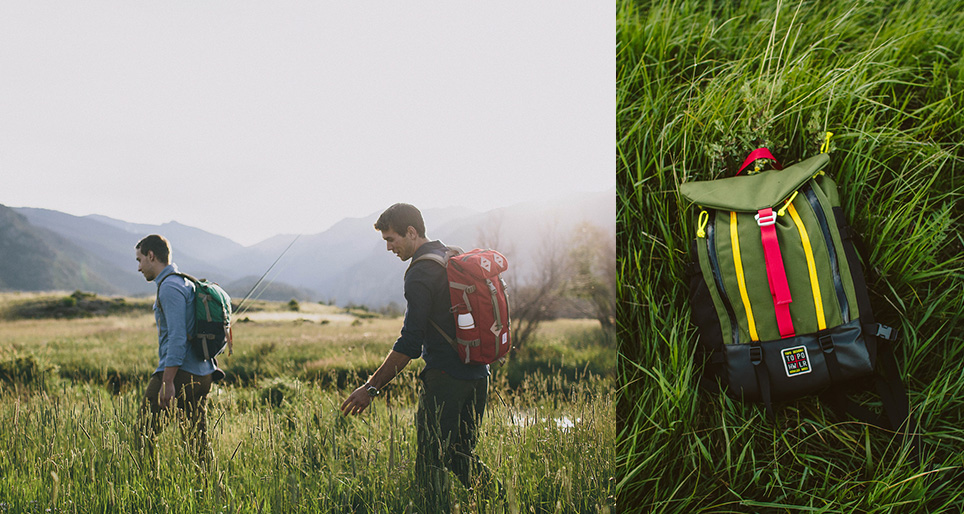
That’s the nice thing about not changing the design – you can do new colors, new fabrics and tweak the frosting on them, if you will. It keeps that core design. I think that’s what people like about our designs – there’s this known quantity underneath the surface, but we can kind of change the flavor of the month for people, which is really cool. That’s the nice thing about not changing the design – you can do new colors, new fabrics and tweak the frosting on them, if you will.
That’s the nice thing about not changing the design – you can do new colors, new fabrics and tweak the frosting on them, if you will.
How did you grow your eComm business? One thing I think is unique about you guys, you’ve done a really good job with the collaborations. Tell me how that played into things and how that’s helped you.
It’s been great. Luckily, Mark and I are coming from more of a tech background. 10 years ago, the ability to jump in and create our own site was second nature for us. We were used to working in the tech space so we were luckily able to latch onto that pretty quickly – and that’s where the trend was heading at the time, too, so it was serendipitous that we had those skills and applied them. We didn’t have a lot of skills on other fronts, like making products.
I was always, oddly enough, the one kid in Wyoming who was super into the outdoors and super into fashion at the same time. Growing up, I always had tons of catalogs at my house, tons of magazines. I was always a massive researcher of trends and fashion. So when we started Topo, for me it was pretty obvious for us to try to branch out of the outdoor space into fashion and street and a bunch of other areas that weren’t necessarily in our space, but were totally relevant to our space. I was constantly reading sneaker sites and streetwear sites and so the idea of applying that collab thinking (that maybe didn’t originate in the streetwear space but was really honed, I would say, in the streetwear space) and apply that in the outdoor space made total sense to us.
We were one of the first people to heavily push collabs in the outdoor space. It works really well for us. Just by releasing something, you automatically have this brand-new mouthpiece to this new audience. I think that’s really what helped us grow our social and our online presence – partnering with those other brands and doing interesting projects.
Obviously it’s important to us to partner with the right people so you’re not just talking to people who aren’t going to be receptive to what you’re saying. I think for us, that definitely helped grow a lot of what we did – those partnerships with other brands.

Yeah, that’s what I was going to ask you. Were you careful about who you picked to partner with?
Yeah, absolutely. Very often we think their audience is good or we think their product is amazing. Sometimes it’s not even like a big massive reach combined with ours, but the product combination would be amazing together. So it’s a lot of different things that make a good collab.
For us, yeah, it’s been awesome. I mean, it’s just been fun for us to be able to work with somebody who’s really good at something else, even learn a little bit about their process, and learn a bit about their skill set and see the inner workings of how that company works. It’s been great from the company side, too. All of it is pretty cool.
Have most brands been open to it?
For the most part, yeah. I would say that we’re pretty diligent about doing the research and figuring out who would be a good fit before we reach out to somebody. I think that very often a lot of those bigger brands that are more established are interested in the idea of reaching a different audience than they have been for 50 or 100 years. That’s where we come in. For us, they add, obviously, a big audience and a long-standing customer base that is really interesting to us, too.
For the most part, it’s just being aware of what would work and what wouldn’t work. Then reaching out to the right people. Very often, we’ll just have a good connection through doing an event or trade show and meet people and start talking and build relationships on that personal level first. Then we figure out what would be a great fit on a larger project. It’s definitely a mix, and definitely some odd things come out of it, but I would say that most people are pretty receptive to it.
It’s definitely a complicated thing too, because once you get to a much bigger company, all the legal, the money being passed around, how you set up a project together, who owns it at the end of the day, how you talk about it, who’s going to sell it and all that stuff gets complicated really quickly. So we try to keep it as simple as we can when we work with a much larger company. Even working with smaller companies, that stuff gets kinda complicated real quick.
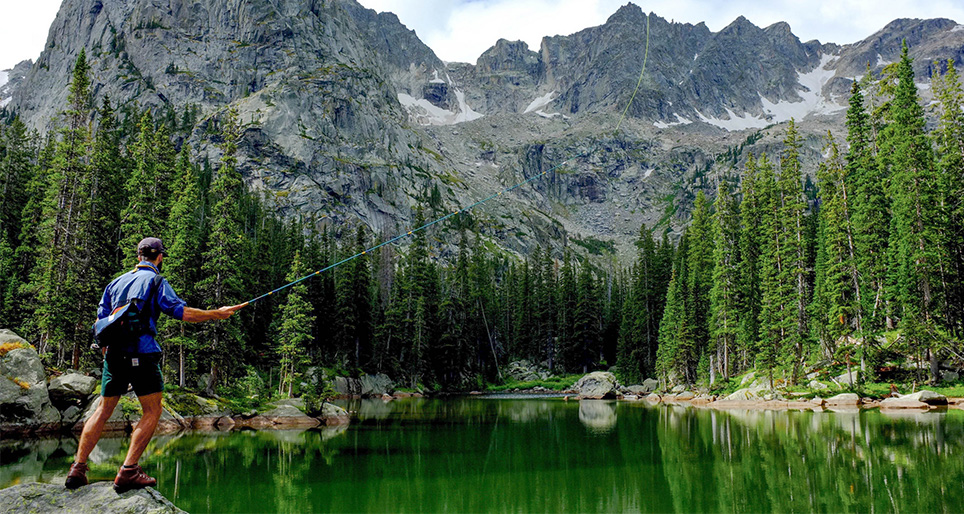
The jump from the eComm to the physical space – you have some really cool stores. What was that like? What made you make that leap? How did you do it?
The first store we opened in RiNo in Denver was a really cool opportunity. Mark Mendez’s partner is really well connected in the Denver space, and he met a guy who was opening this concept space with some mixed use – there were some office spaces in there as well as restaurants and retail. They were all made out of recycled shipping containers, which was really fascinating to us because we’re both kind of nerds on the shipping container front and building stuff out of them. So it seemed like a really great fit for us and it was a nice small space that we could kind of cut our teeth on doing retail.
For us, the desire to do retail was less about building this giant other business which, you know, retail can be. It was more of this idea of pairing the physical experience with that online presence. We were mostly known for our digital presence, and it’s tough to see and feel and touch everything that is Topo unless you can actually do it in-store.
We work with a bunch of retailers as well, but being able to craft our own space exactly the way we wanted it was really the goal with retail. People can come in, see the entire world of Topo in one space, 360°, connect with somebody in the store at a one-to-one level, talk about the brand, host events and throw parties and use it as a brand building and community space – for us, it really made a lot of sense.
We tend to build our products all together as a line, so being able to see it in its entirety rather than just pieces that are disparately available out in the world is kind of the goal for us. For people who are super Topo fans, they can come in, see everything at once which is exciting, and then maybe even meet friends that way, too.
In general, it’s a great brand-building experience and a way for us to really craft our entire ethos in one spot.
Like you mentioned, you still have a shop here in Louisville. Is that really important to you guys – to keep it local? Tell me about that.
It’s always been a huge part of what we do, to manufacturer here in Colorado. We’ve spent the past 10 or so years since we’ve had Topo honing our system here in Colorado. I think the bags that come out of here are amazing and the people who’ve been working on them in that time were talented when they started and are more talented now because of the fact that they constantly try to get better and do good work. I think that’s, in general, our approach with making things – we’re really lucky to work with super, super talented people.
I don’t think people really think about that idea very often. The people making the stuff are why the stuff is so good. Right? The design is obviously critical to starting the process, but at the end of the day, whoever is making it needs to have literally amazing talent in what they do. We’re lucky that yeah, we have super talented people in our backyard who can do that.
The people making the stuff are why the stuff is so good.
We have expanded our line to have a lot more apparel and outerwear and things like that. So we do some stuff in California, we do some stuff in Vietnam and it’s with that idea that these are really the most talented people in the world. They’re super skilled and their facilities are amazing and they have decades of experience doing this stuff. That’s really what it takes to make it.
At the end of the day, it’s really awesome that we can make a bunch of our stuff right here in our backyard, which is pretty pretty rare in the outdoor industry. It’s a cool thing that we can run over to the shop and see what’s going on.
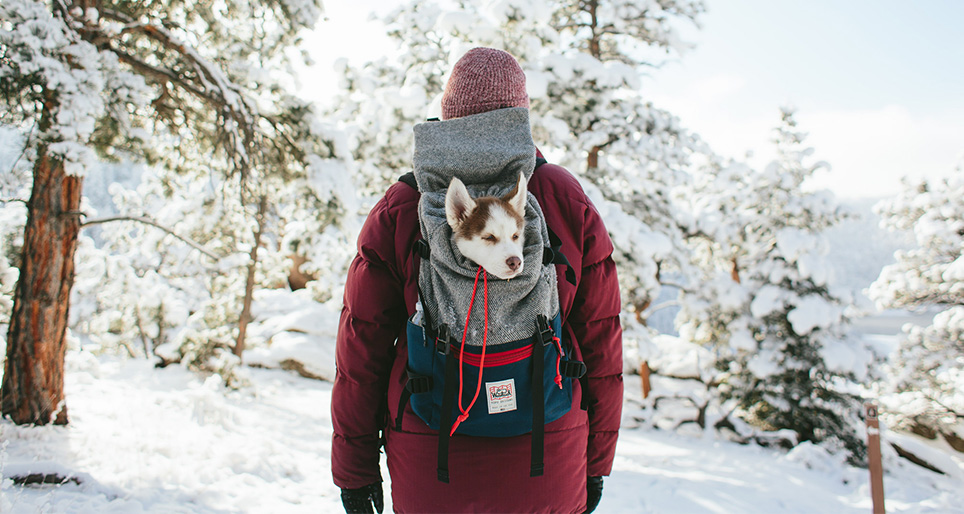
What are some of the challenges you see in the industry regarding sustainability and what are the biggest challenges? What do you think people can do to kind of tackle those or be aware of them?
At the end of the day, making stuff, buying stuff and getting rid of stuff – it’s pretty tough on the planet, right? If we’re all pretty honest about it, we should probably just get in the basement and turn off the lights.
I think the toughest part about it – as a consumer especially – is what you’re actually looking to affect as far as impact goes. I think there’s tons and tons and tons of marketing put around what’s sustainable, what isn’t sustainable, what qualifies as sustainable. Even within the industry, it’s honestly pretty tough to know sometimes what’s good and what isn’t good.
I remember like when bamboo was the second coming. Everybody was super into bamboo and like, oh, this will save everything, but it turned out it used so much water that it was actually much, much worse than traditional processes. It turns out that it was a pretty big marketing effort instead of something that was actually real legit.
In general, our approach is to try to make stuff that lasts a really long time, so that people use and buy fewer things as a result of it. I think we approach our products with this really multiuse, utilitarian idea. For us, when we start with a product, if we’re looking at use cases and build concentric circles around a product, how deep within those circles can every product get and how multiuse can it be? I think that that enables someone to have this core set of stuff that works anywhere and in any circumstance unless they’re top of Everest or whatever.
In general, our approach is to try to make stuff that lasts a really long time, so that people use and buy fewer things as a result of it.
For daily life, and for most people, I’m building a set of products with utility in mind – that helps reduce the amount of things that people make and the amount of waste that is transferred at the end of the day.
Obviously, there are ways to make things that are way more friendly to the environment. Using organic cotton or approaching a DWR treatment on a fabric in the right way so it’s not toxic. There’s a ton of stuff that has been really, really good that the industry has pushed towards. All of that effort has been really awesome, and that can be easy to figure out as a brand.
It’s all just the choice too, right? Everything you’re doing is just a choice of what you want to do, how you want to make it, what it costs and all that stuff. As designers, we have the keys to the kingdom. We just need to decide what to do. I think that’s kind of a daunting and kind of a cool thing.
What does the future of Topo look like?
We really want to approach the outdoor industry in this really inclusive, really approachable and really achievable space where you can meet your goal every single day by doing cool things.
We really have a great opportunity right now to be one of the new outdoor brands that is really paying attention to all this stuff that we’re talking about right now. That idea of being less intense about how we talk to our customers and less of this idea of being this aspirational thing that you’ll never achieve. I think that’s where the outdoor industry has been for quite some time – this idea of scaling the peaks and doing these epic things that, you know, only a handful of people in life will ever be able to achieve.
We really want to approach the outdoor industry in this really inclusive, really approachable and really achievable space where you can meet your goal every single day by doing cool things. That’s where we’ve always tried to be. That middle ground between outdoor and lifestyle, fashion and function. I think we have a really good opportunity right now because I think people are really receptive to that message. I think the outdoor industry as a whole is kind of shifting more towards that idea. I think that we have a really good spot for our brand right now to succeed in this.
It’s not this odd conversation we used to have with people back seven years ago where we’re doing this stuff that’s sort of outdoor, sort of lifestyle. People were like, “Okay, let me know how that works.” So, the future for us is probably doing a lot more of the same – really capitalizing on this cool spot in the outdoor industry that’s way more attuned to exactly what we’re doing right now. So yeah, I’m excited about it.
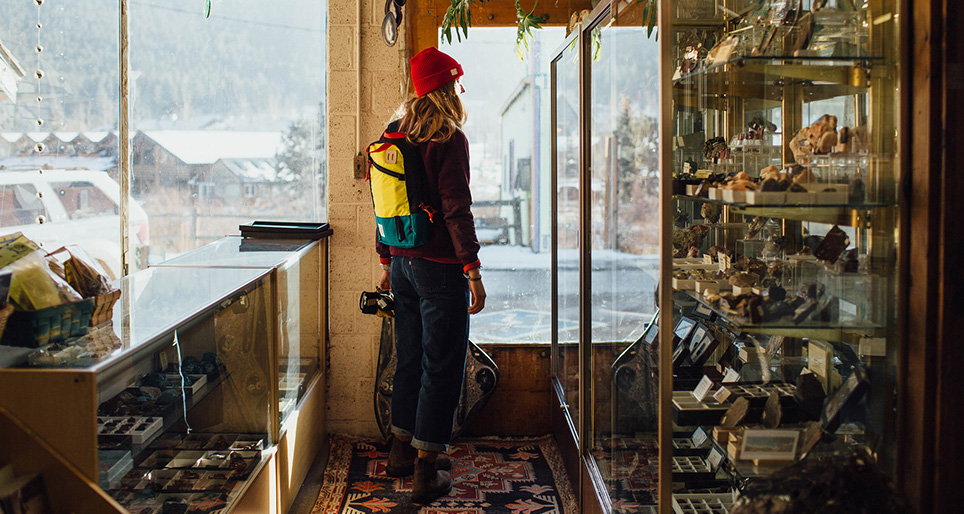
What would be your biggest or best advice to give to other entrepreneurs?
I think really looking at your strengths and capitalizing on them and what you can add to the business. For me, I know my weaknesses and I found a business partner who seemed to complement me very well. I do the things that he’s not great at, and he does the things that I’m not that great at. We’re able to capitalize on each other’s strengths and really avoid falling into those traps of the things that you don’t do well.
I think everyone has got something that they’re really good at, and they can apply that to basically any endeavor. Just knowing that and trusting yourself and not trying to constantly work on this stuff that you’re bad at – either hire it out, get a partner or figure out a way to solve that and then spend most of the time on the things that you really do well. By capitalizing on the things that you’re good at, you’ll be able to jump over the competition.
Some people can just do it so much more quickly and effortlessly than you can. Being able to see that and just allow somebody to do it. It’s like, wow, that’s amazing.
Snag a Topo pack >
